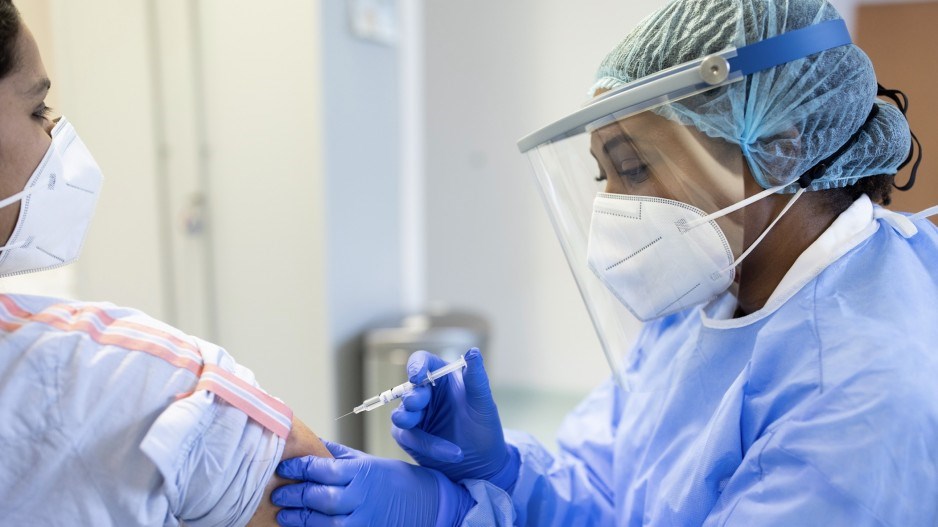Just over 3,000 health-care workers not vaccinated against COVID-19 remain on unpaid leave in B.C. amid a province-wide mandate.
One week ago, there were 3,325 unvaccinated health-care workers off the job compared with 3,071 as of Tuesday, according to numbers offered by Health Minister Adrian Dix during an afternoon briefing.
“It is our … hope that people will continue to get vaccinated so we can reduce the numbers of people who are on leave of absence without pay and/or have lost their positions,” Dix said.
The lack of vaccinations is most prevalent among health-care workers in B.C.’s Northern Health region, where 5% are off the job after forgoing a jab. Province wide, only 2% of health-care workers are unvaccinated.
Among those 3,071 unvaccinated health-care workers, 1,032 are casuals, 989 are full-time workers, 819 are part-time workers and 16 are not identified within those categories.
About 3% of paramedics, 2% of nurses and 0.7% of resident doctors are not vaccinated against COVID-19.
Meanwhile, a “limited supply” of the Johnson & Johnson (NYSE:JNJ) COVID-19 vaccine is expected to arrive in B.C. by next week, provincial health officer Dr. Bonnie Henry revealed during the same Tuesday briefing.
She said the first priority for the vaccine will be offered to health-care workers who want it as an option to continue working within health-care facilities.
But she confirmed details would be coming next week about how the general population might be able to access the J&J vaccine through a central call number.
The Pfizer Inc. (NYSE:PFE) and Moderna Inc. (NYSE:MRNA) vaccines, which have made up the vast majority of doses offered to Canadians, are both messenger RNA (mRNA) vaccines.
J&J is a viral vector vaccine, similar to the AstraZeneca plc vaccine. But unlike AstraZeneca, it is a single-shot vaccine. The J&J vaccine was just recently approved for use for a booster shot in the U.S.
The province has begun offering mRNA boosters to British Columbians, which AstraZeneca recipients also qualify for.
The timing for booster shots will depend on recipients’ ages and risk levels, while vaccines will also be made available concurrently for children five to 11, pending approval from Health Canada.
“There will be some people who find invitations to receive their booster dose” mostly around the five-month mark, Henry said, referring to seniors.
“And some people who are younger, healthier will get it just a little bit later.”
Higher-risk populations are considered to be those ages 70 years and older, as well as Indigenous populations in rural locations, residents in long-term-care and assisted-living, the immunosuppressed and health-care workers who received their initial two doses at a shorter interval than the general population.
Some of these groups began receiving boosters in September and the new campaign, announced last month, will focus on others in those groups through to December.
The government estimates it will begin administering boosters in January to those considered clinically extremely vulnerable (but not immunosuppressed), health-care workers in long-term-care and assisted-living, health-care workers in the community and then the remaining general population 12 and older.




